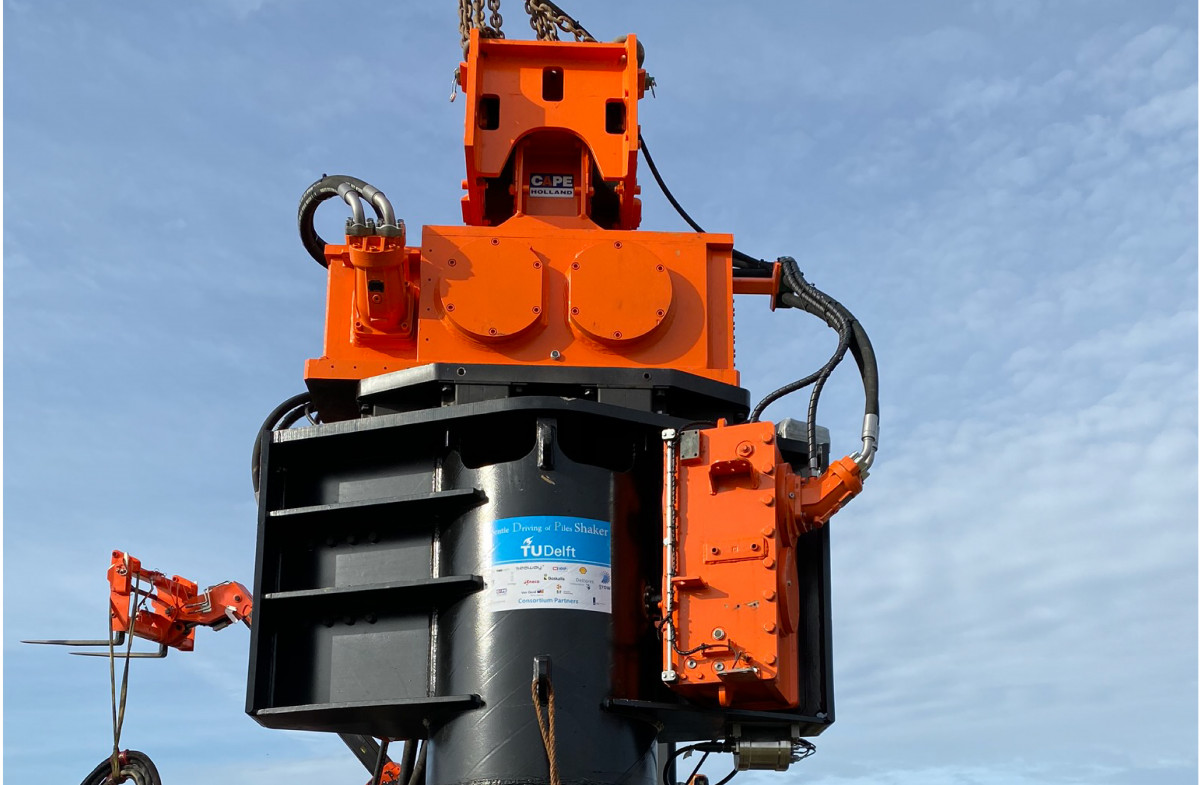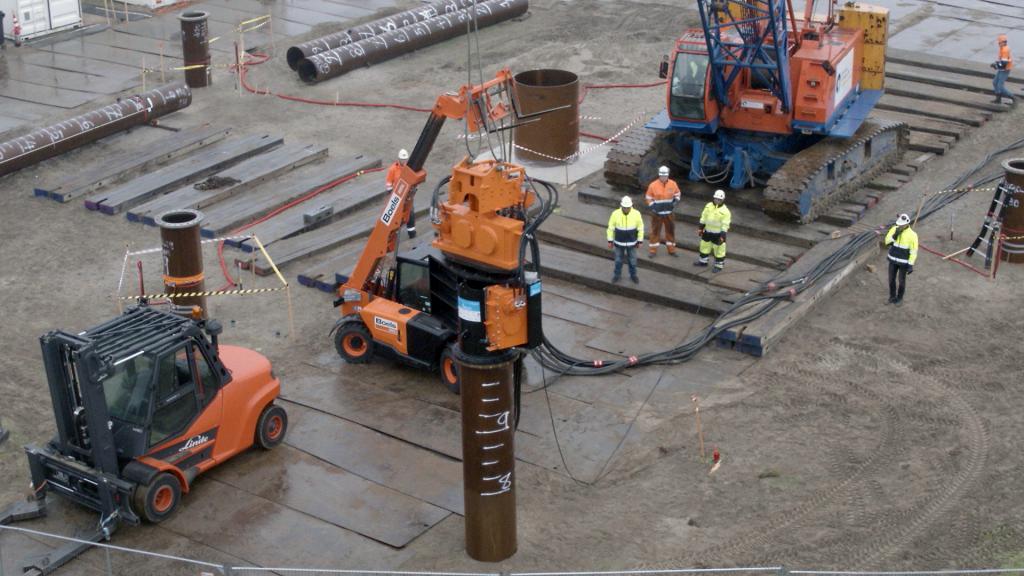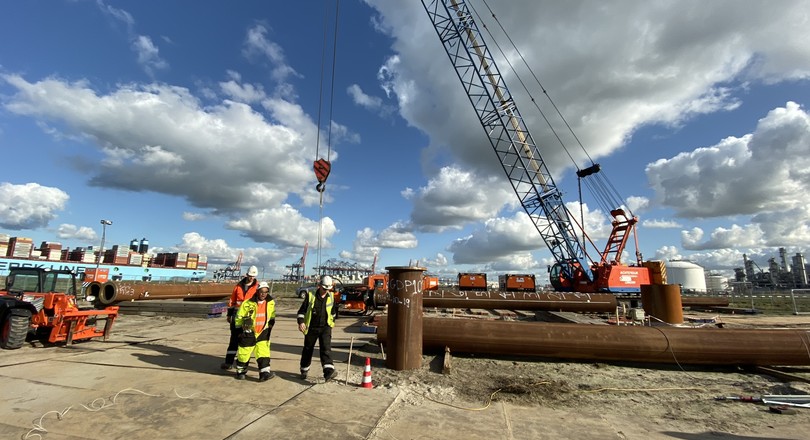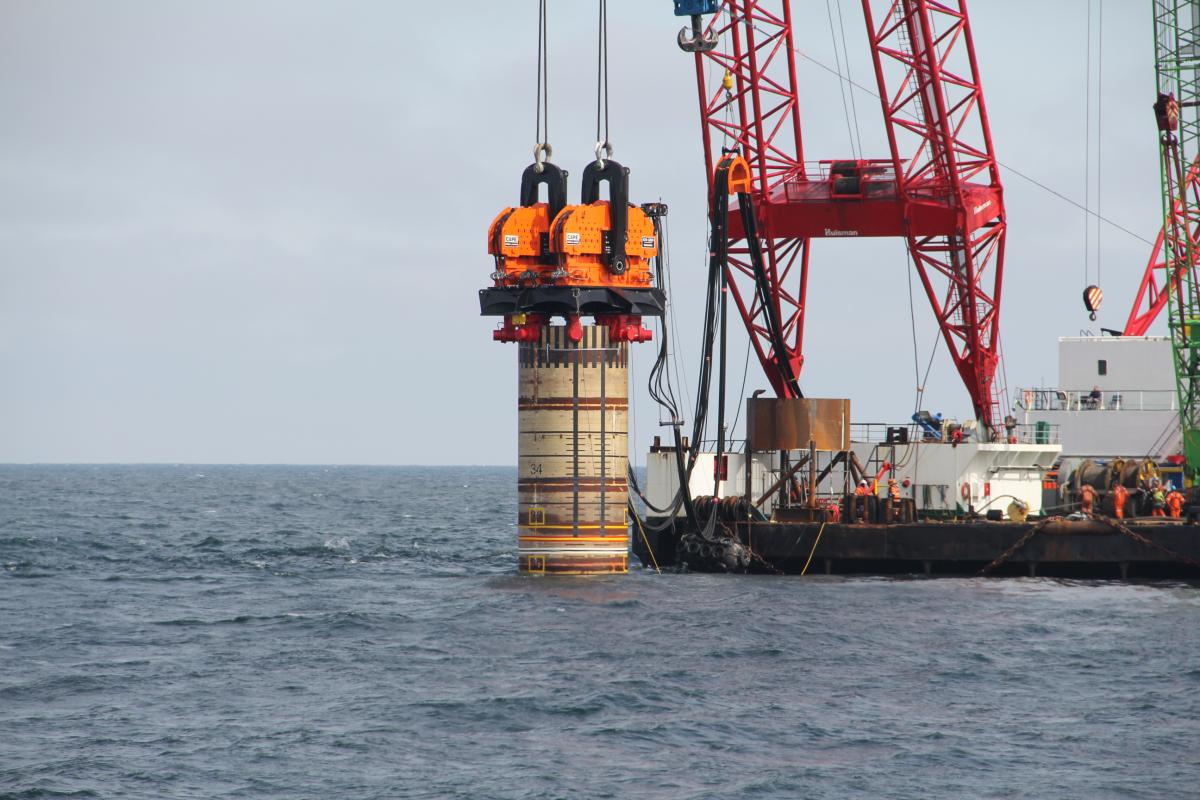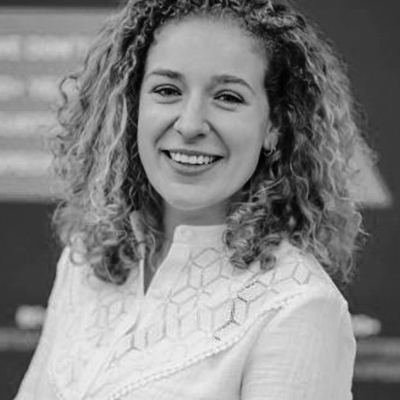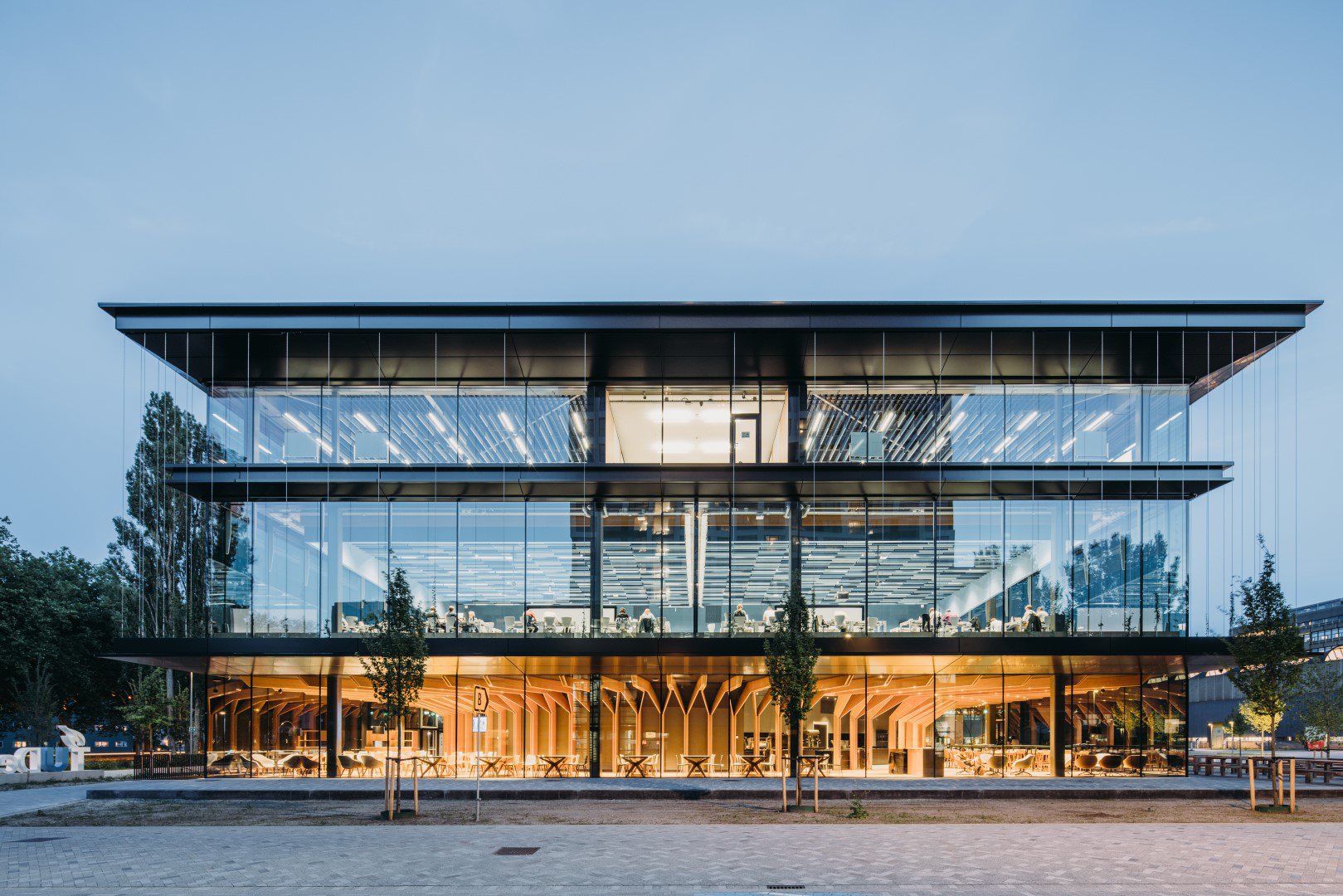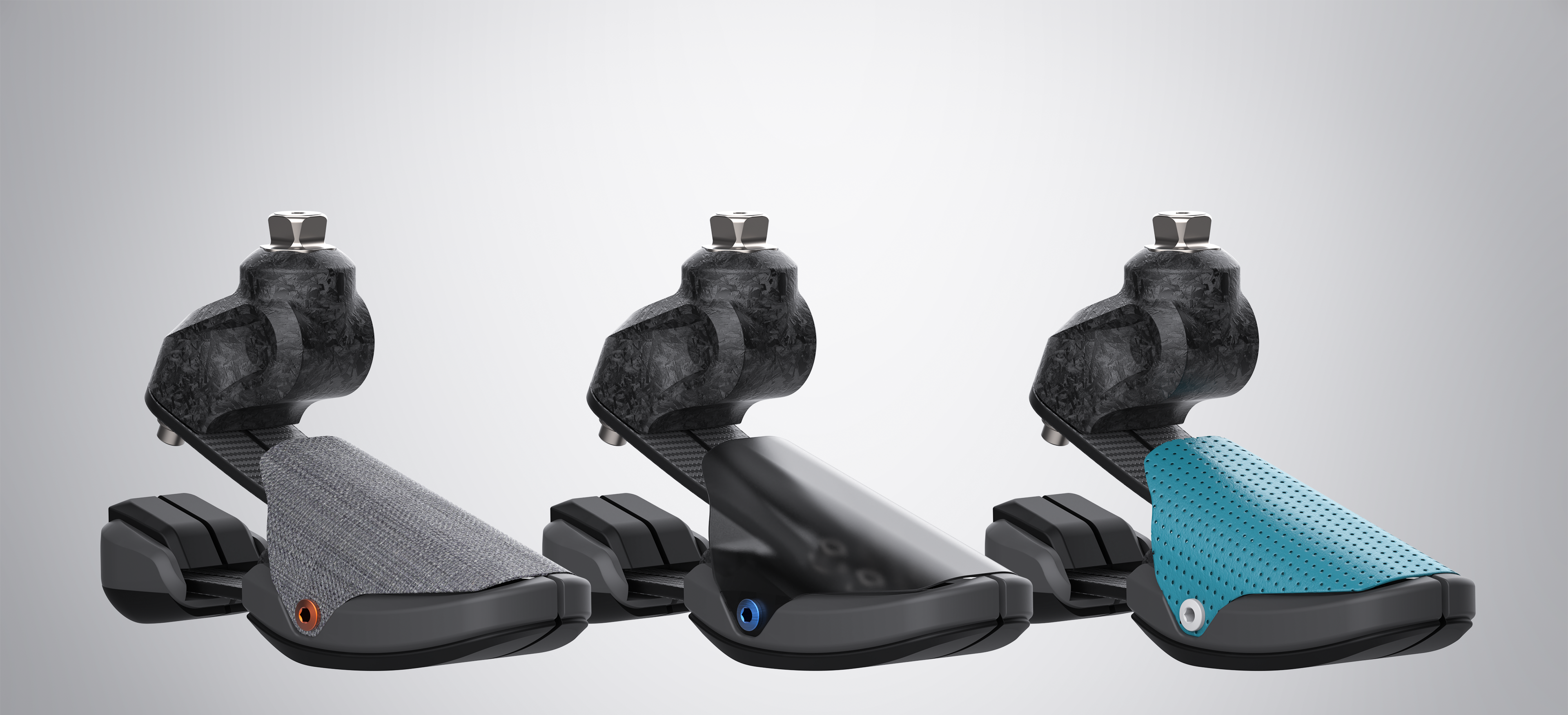Ask people about pile driving and most will agree: there’s little to nothing subtle about it. Heavy, rhythmic noise, shaking ground and heavy vibrations. It’s not just causing pressure on society, but also has a negative impact on the environment, especially in vulnerable ecosystems. In particular when piledriving takes place offshore. Vibrotwist believes that the time has come to do things very differently. What if pile driving could be an almost silent, smooth, vibration-free process? Stas Verichev, a co-founder and CEO of Vibrotwist, explains. ‘Don’t smash, don’t push – twist’
Verichev places an empty carton coffee cup on the table and pushes it, explaining the process: ‘pushing something in the ground, causes it to expand radially because of the so-called Poisson effect. This results in noise radiation, both airborne and underwater. However, when the pile is twisted, there is, by definition, no such radiation. So the whole process of pile driving becomes way more silent. That’s precisely what we’re aiming for.’
So what’s the secret sauce? In traditional pile-driving, piles are knocked, pushed or shaken into the ground. Although tried and proven, there are a lot of disadvantages to it: soil shakes when something heavy is driven in and on top of the aforementioned mechanism of noise radiation, it does also create shockwaves in the soil that spread around. And for an underwater soil, these shockwaves also irradiate back into water. It also radiates a lot of noise, which is bad news for humans in urban settings and wildlife in nature reserves on land and water.
When technology screams industrial potential
Around 2017, Professor Andrei Metrikine worked on an innovative new way of piledriving that came to be called ‘Gentle Driving of Piles’ – GDP. It’s not about pushing, but twisting. It reduces friction between the pile and the soil which improves the driveability. It does not cause radiation of shockwaves in the soil.And, last but not least, it prevents the pile of being itself the source of noise radiation, which also helps keeping the noise levels down. Metrikine compares it to how the cork of a champagne bottle is easier to get out with a twisting motion than straight-up pulling. GDP applies the same concept and also uses high-frequency vibrations, that help compaction, improving the stability of the pile.
Professor Metrikine was Verichev’s supervisor during his PhD at Civil Engineering and Geosciences. whereafter his defense, Verichev worked in the offshore industry for about 20 years. Metrikine and Verichev stayed in touch and the professor invited him for a demonstration of his invention in the field, which was a part of the pilot GDP Joint Industry Project supported by the Rijksdienst voor Ondernemend Nederland (RVO). It was a truly eye-opening experience, explains Verichev. ‘We were gathered on the Maasvlakte for the very first full-scale demonstration. You know what to expect with normal pile-driving: a whole lot of noise and shaking ground. And that is exactly what everyone has witnessed when the shaker was operated in a vertical vibration mode only.And then it was turned into a torsional mode, which, in comparison, was almost quiet, without causing any massive vibrations or noise. The audience witnessing the test was really shocked by experiencing this. It was truly amazing to see that it was possible to drive piles into the ground so smoothly.’
Changing perspectives and demands
Metrikine and Verichev stayed in touch and during the pandemic years got to talking. GDP displayed massive potential but someone was needed to really bring it forward. Someone with a combination of technological knowledge in the field, commercial skills and R&D. Verichev laughs: ‘Professor Metrikine pointed it out: that’s you!’
There’s a lot of room for improvement and subsequentially, a lot to be gained when driving piles, explains Verichev. ‘Rules and regulations for pile driving are becoming more strict, onshore and offshore. And coastal protection is an issue too. Some wind farms are very close to dikes and dams. Heavy vibrations and/or waves could damage critical infrastructure. So alternatives where both driving piles and taking them without damaging vibrations are immensely valuable.’
More and more, environmental impact is of concern during large construction projects and regulations are becoming stricter. Currently, the industry works with expensive noise mitigation technologies, explains Verichev. ‘One example are bubble screens. But the bigger the pile, the more the noise spectrum shifts towards lower frequency band. Bubble screens become less effective for longer waves. And at some point, the piles for turbines are simply too big for bubble screens to work properly. But if you take noise and vibrations out of the equation – which Vibrotwist does – you save both time and money, because you need less permits, less equipment and ships. And, on top of that, it is also very important to mention because of the flexibility in shaker’s control parameters, our method allows driving piles to final penetration, which, for example, is not always the case for traditional vibro-hammers.’
Recovering valuable resources stuck in the ground
Resources are increasingly scarce. Currently, it’s pretty hard to get piles out of the ground. The industry practice is to remove soil around a pile below the seabed, to cut the upper part off and leave the rest in the ground. But there’s massive disadvantages to this approach, explains Verichev. ‘You can’t drive a pile at the exact same spot. Which is unfortunate, because a new plot will have to be properly researched to decide what are the optimal configurations for a wind farm and that costs money. And, for instance, the North Sea is not endless… Enormous wind farms are currently created all over the world, but every wind farm will at some point reach it’s end-of-life phase, when turbines will be taken down and respective pile foundations will have to be decommissioned.’
At the same time, massive amounts of steel are left in the ground that could have been recycled. With GDP, those piles could just as well be extracted entirely from the soil, making space for new turbines and bringing back a whole lot more steel than is currently the standard. Currently it’s not mandatory to take piles out, explains Verichev. ‘But when steel prices rise and/or decommission becomes mandatory, that changes the picture. Part of the steel that you take out, can also compensate for the costs that are involved extracting them in the first place. A circular economy is definitely beneficial.’
From sand to clay and from on-shore to offshore
Vibrotwist is a TU Delft spin-off and Delft Enterprises portfolio company. For onshore, the technology is currently at a Verichev explains that TU Delft currently engaging with industry partners in two projects. The first involves a new full-scale demonstration, but in clay. ‘The previous demonstration was in sand, which is relevant for offshore, since most of, for example, the North Sea, is sand. But on-shore, clay is very prevalent, so it is important to further test on this type of soil too.’
The second project involves a consortium of companies and aims to build a shaker able install piles with 4-6 meters in diameter offshore. Verichev: ‘in this consortium all important players are gathered: machine builders, offshore contractors, subcontractors and wind park developers. We are currently working on securing the funding and this would be a first project, where Vibrotwist will be directly involved.
Traditionally, it’s a conservative, risk averse business, Verichev reflects. ‘I know quite a lot about it – I’ve worked in the industry for almost twenty years. But when you demo this tech, you’re turning heads and creating believers. It happened to me. I couldn’t believe my eyes (or ears) during the first field test. That’s what we’re working toward. Show, don’t tell.’
Verichev counts himself lucky with all the support from TU Delft, Delft Enterprises and the entrepreneurial ecosystem surrounding the university. ‘The NWO and Faculty of Impact initiative have also been a massive help, supporting academics moving into entrepreneurial roles. I truly believe we’re onto something revolutionary here. But it takes time before Vibrotwist will actually turn a profit. It literally makes the difference to have the backing of the university, Delft Enterprises and NWO to be able to do this.’

